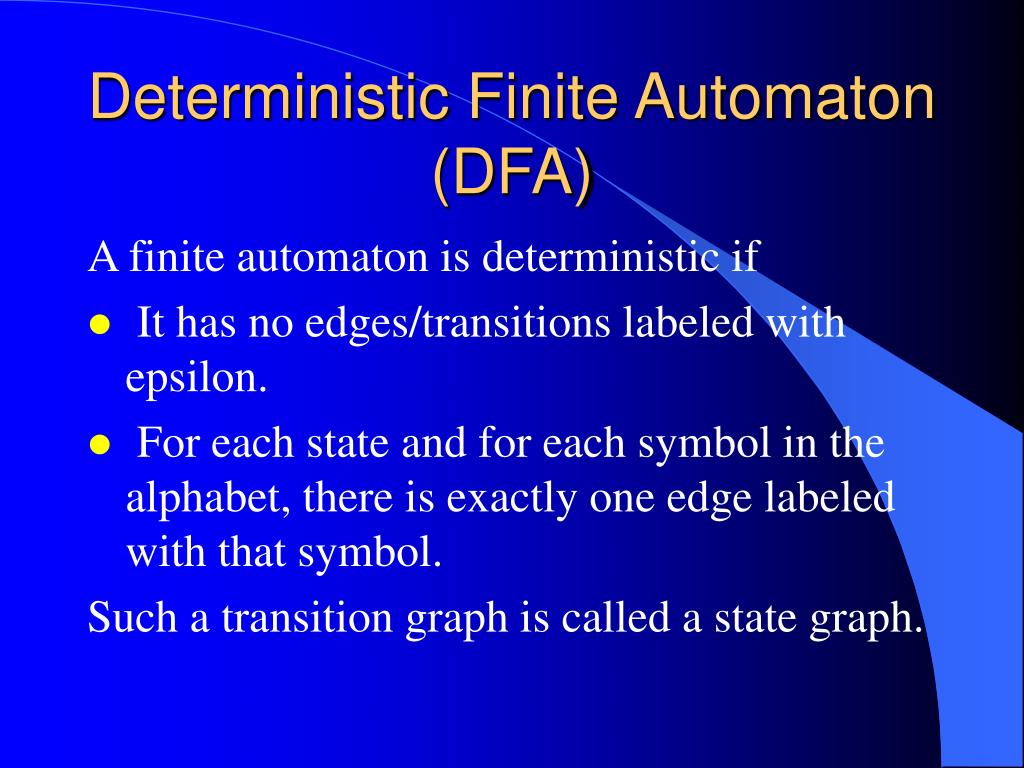

In NDFA, backtracking is not always possible.Ī string is accepted by a DFA, if it transits to a final state.Ī string is accepted by a NDFA, if at least one of all possible transitions ends in a final state.Īcceptors, Classifiers, and Transducers Acceptor (Recognizer)Īn automaton that computes a Boolean function is called an acceptor. Hence it is called non-deterministic.Įmpty string transitions are not seen in DFA. The transition from a state can be to multiple next states for each input symbol. The transition from a state is to a single particular next state for each input symbol. The transition function δ as shown below − Let a non-deterministic finite automaton be → The final state is indicated by double circles.

The initial state is denoted by an empty single incoming arc.The arcs labeled with an input alphabet show the transitions.Graphical Representation of an NDFA: (same as DFA)Īn NDFA is represented by digraphs called state diagram. Q 0 is the initial state from where any input is processed (q 0 ∈ Q).į is a set of final state/states of Q (F ⊆ Q). (Here the power set of Q (2 Q) has been taken because in case of NDFA, from a state, transition can occur to any combination of Q states) Δ is the transition function where δ: Q × ∑ → 2 Q ∑ is a finite set of symbols called the alphabets. Formal Definition of an NDFAĪn NDFA can be represented by a 5-tuple (Q, ∑, δ, q 0, F) where − As it has finite number of states, the machine is called Non-deterministic Finite Machine or Non-deterministic Finite Automaton. Hence, it is called Non-deterministic Automaton. In other words, the exact state to which the machine moves cannot be determined. In NDFA, for a particular input symbol, the machine can move to any combination of the states in the machine.


 0 kommentar(er)
0 kommentar(er)
